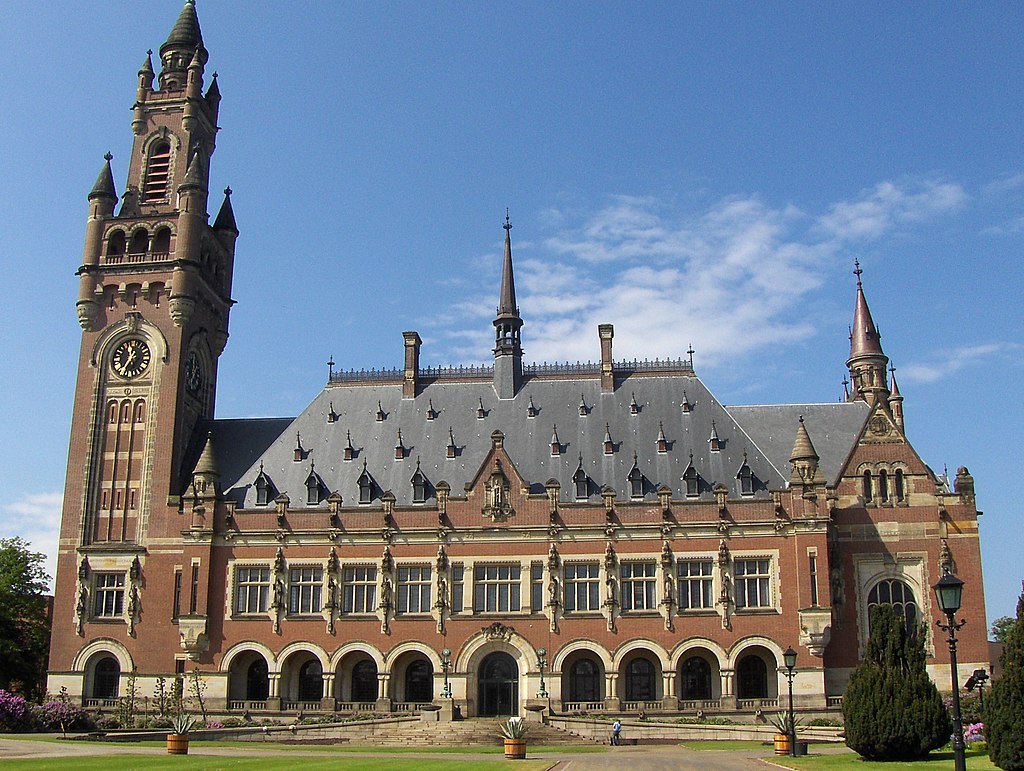The New Travel Ban: Undermining the Immigration and Nationality Act
On September 24, President Trump issued a proclamation replacing Executive Order (EO) 13780 that is currently before the Supreme Court—albeit with oral argument cancelled pending briefs from both sides on whether the new proclamation renders the case moot.
Published by The Lawfare Institute
in Cooperation With

On September 24, President Trump issued a proclamation replacing Executive Order (EO) 13780 that is currently before the Supreme Court—albeit with oral argument cancelled pending briefs from both sides on whether the new proclamation renders the case moot. The proclamation—which I’ll call the new travel ban—continues indefinitely some of the most onerous restrictions in EO 13780, including the suspension of family-based immigration from several countries.
The new ban’s adverse impact on family reunification means that its indefinite duration undermines the structure and purpose of the Immigration and Nationality Act (INA), thereby exceeding the power that Congress delegated to the President in the statute. Although the Supreme Court may find that the challenge to the now-superseded revised EO is moot, the new ban makes it likely that the Trump administration will find itself before the Supreme Court again—and sooner rather than later.
As Marty Lederman describes, the order suspends the entry of both immigrants and some or all classes of nonimmigrants from Chad, Iran, Libya, North Korea, Syria, and Yemen. The administration added Chad to the list and dropped Sudan, asserting that Chad is unable to provide requisite data for adequate terrorist screening, while Sudan can. In addition, the new ban bars the entry of immigrants from Somalia, subjects Iraqi nationals to heightened screening, and bars nonimmigrant entry of certain Venezuelan government officials. To the administration’s credit, the new ban does not cover students or refugees. (Like EO 13780, the new ban also exempts current visa-holders and lawful permanent residents [LPRs].)
In restricting entry indefinitely for the groups mentioned above, including family-sponsored immigrants, the new ban cites a comprehensive interagency process that addresses shortfalls that the Administration perceived in the provision of information by the countries listed above. My prior in-depth analysis of EO 13780 suggested that a temporary entry pause was consistent with the INA, to address information deficits in countries such as Libya, Syria, Somalia, and Yemen that have been racked by armed conflict. However, the indefinite suspension of family-sponsored and employment immigration from the countries listed in the new ban lacks the limiting principle of temporary duration that fit the previous policy into the INA’s detailed scheme.
In taking the drastic step of indefinite suspension, the new ban relies on a questionable distinction between immigrants and nonimmigrants that turns the INA on its head. For decades, family reunification has been a central goal of the INA, which removed national origin quotas that had been in place for forty years. In the 1965 changes that created today’s INA, Congress sought to ease the pain of separation for close family members separated from U.S. citizens and LPRs by national borders. (See pp. 297-98 of Jack Chin’s article here). Congress coupled that stress on family reunification with a regime of vetting by consular officials that the new ban acknowledged was “more extensive” than the vetting accorded all applicants for nonimmigrant visas.
Targeting immigrant visa applicants seems incongruous with this backdrop of enhanced vetting. It’s true, as the new ban asserts, that LPRs are “more difficult to remove” than nonimmigrants, but that’s because Congress considered LPRs’ interests in remaining in the U.S. as dovetailing with their ties to close relatives among citizens and other LPRs. The new ban exacerbates the problem of family separation that Congress labored to resolve. Because of that harm to the statutory scheme, the proclamation exceeds the power that Congress delegated to the president under 8 U.S.C. § 1182(f) to prohibit entry of noncitizens.
The administration also gets no support from another provision of the INA, 8 U.S.C. § 1152(a)(1)(B), which permits the secretary of state to set “procedures” for visa issuance. The “procedures” provision would allow the government to additional information from visa applicants. For example, the administration could have established tailored procedures that addressed potential information deficits by requiring more explanation or documentation from visa applicants (as the administration has done on supplemental questionnaires for visa applicants). Further information requirements, such as the disclosure of social media “handles” for some visa applicants, might be appropriate—if they do not add up to a de facto indefinite ban on immigration from that particular countries.
However, the new ban crosses that line because it is so manifestly over-inclusive. Consider children under 15 years of age. Beyond a disqualifying communicable disease, it’s difficult to imagine that a young child could have engaged in conduct that renders him or her inadmissible. But the new ban does not say that medical professionals are unavailable to make that determination. Instead, it throws out the baby with the bathwater, covering any child applying for an immigrant visa.
The waiver system in the new ban does not remedy its clash with the INA. To obtain a waiver, a noncitizen from the affected countries must show that:
- denying entry would cause the noncitizen “undue hardship”;
- entry would not pose a threat to the U.S.; and,
- entry would be “in the national interest.”
The second criterion—demanding that the noncitizen show he or she is not a threat—reverses the INA’s stance. The INA says that the burden to determine that a visa applicant constitutes a threat falls on a consular officer. (Consular officers may alternatively exclude an applicant because of prior commission of a crime, traces of a communicable disease, inability to support him- or herself, etc., as described in the discussion in Justice Kennedy’s concurrence in Kerry v. Din.) Placing the onus on the visa applicant to show that he or she is not a threat shifts a burden that Congress placed on the government. The first and third criteria introduce elements that do not figure at all in visa decisions under the INA. Congress knew how to require a showing of “hardship” under the statute. It has done so in several other immigration provisions, such as the requirement that undocumented noncitizens applying for a remedy called “cancellation of removal” show “exceptional and extremely unusual hardship” to a close family member who is a citizen or LPR. However, the INA does not require any showing of hardship by ordinary visa applicants overseas. The possibility of a shortfall in information about some visa applicants does not justify these unilateral changes to the INA’s carefully calibrated system of visa processing.
Similarly, the provisions in the new ban for review of its provisions every 180 days do not remedy its conflict with the INA. To be sure, some review is better than none. However, the problem with the new ban is that it shifts the longstanding default admissions policy: What was once a policy of admission absent an affirmative basis for exclusion is now exclusion absent a compelling case for admission. That shift will solidify the impression of the U.S. as a less-than-welcoming nation. More to the point, the shift in the default upends the INA’s statutory scheme; periodic review does not remedy that problem.
In contrast, a de facto permanent ban might well violate the INA’s prohibition on discrimination in the issuance of immigrant visas (8 U.S.C. § 1252(a)(1)(A)). In suspending immigration from several countries without an end-date, the administration has embraced the dubious legal and policy arguments for an indefinite ban.
The new proclamation also strives in vain to counter the charge that it constitutes a “Muslim ban” that violates the Establishment Clause. To diversify the countries affected by the ban, the proclamation adds non-majority-Muslim North Korea and Venezuela. However, in Woody Allen’s memorable line from Bananas, the inclusion of North Korea and Venezuela is a “travesty of a mockery of a sham.” Like Josh Blackman, I have doubts about whether the dynamic realm of foreign affairs is a fit subject for Establishment Clause scrutiny. That being said, the inclusion of North Korea and Venezuela does nothing to ease the concerns of those who argued that the original and revised immigration EOs violated the Establishment Clause. Since North Korea does not allow its nationals to emigrate to the U.S. (or anywhere else), the number of North Koreans affected by the new ban is virtually nil. Moreover, the impact on Venezuela is confined to a small group of government officials. In other words, the effect on Muslims of the original and revised EOs continues largely unabated in the proclamation, with few implications for non-Muslim majority countries beyond symbolism
Because of the new ban’s terms, the Supreme Court will most likely find that the pending challenges to the revised EO are moot. The Court has just canceled its scheduled October 10 argument on EO 13780 pending briefing on the new ban’s relevance to the case. Challenges to the new ban should emerge almost immediately. If the experience with the prior EOs is illustrative, the administration may find itself back before the Supreme Court in the spring of 2018. At that time, perhaps the Court will weigh in on the merits and protect the INA’s structure from further incursions.





